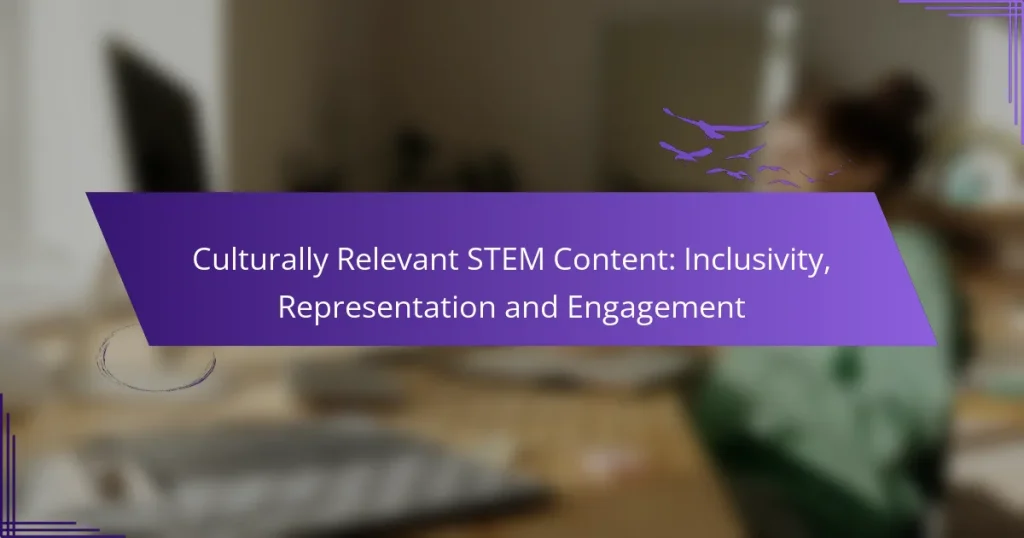Culturally relevant STEM content plays a crucial role in enhancing student engagement by linking educational materials to their diverse backgrounds and experiences. By fostering inclusivity and representation, this approach not only makes STEM subjects more appealing but also creates an environment where all students feel valued and motivated to succeed.
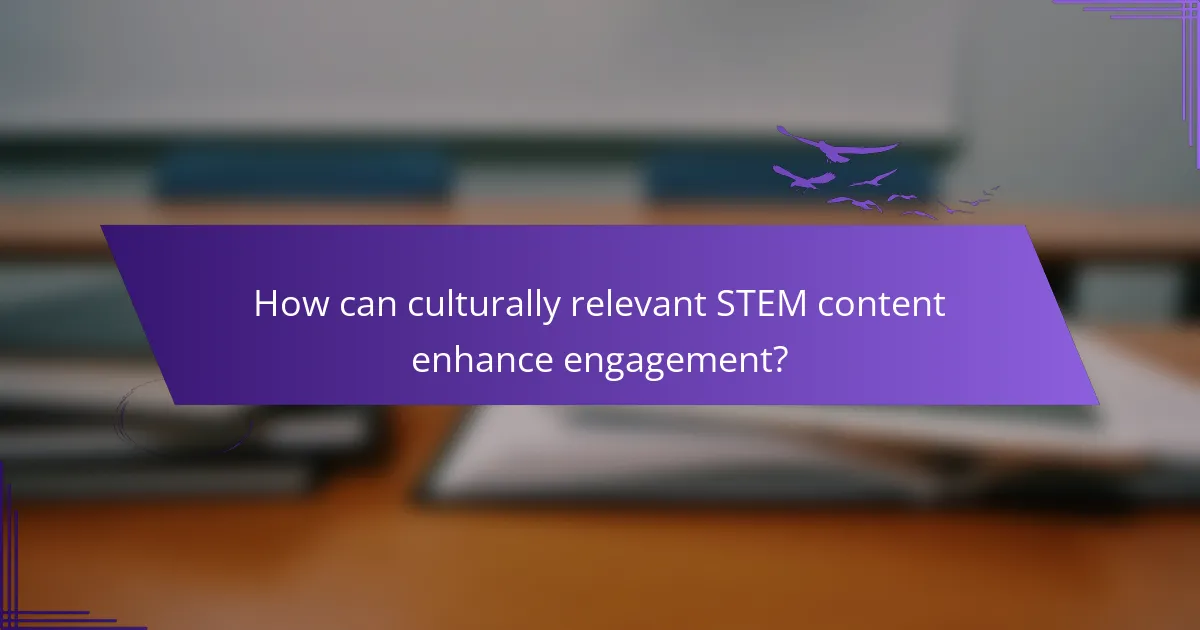
How can culturally relevant STEM content enhance engagement?
Culturally relevant STEM content can significantly boost engagement by connecting learning materials to students’ backgrounds and experiences. This approach fosters a sense of belonging and relevance, making STEM subjects more appealing and accessible.
Increased student interest
When STEM content reflects the diverse cultures and experiences of students, it captures their attention and piques their curiosity. For example, integrating local environmental issues or culturally significant innovations can make lessons more relatable and engaging. This connection often leads to increased participation in class discussions and activities.
Teachers can enhance interest by incorporating stories and examples from various cultures, showcasing contributions from underrepresented groups in science and technology. This not only enriches the curriculum but also validates students’ identities.
Improved academic performance
Students who engage with culturally relevant STEM content often show improved academic performance. By relating lessons to their own experiences, students are more likely to grasp complex concepts and retain information. Research indicates that when students see themselves represented in the curriculum, their motivation to excel increases.
In practical terms, educators can implement project-based learning that allows students to explore STEM topics through the lens of their own cultures. This method encourages deeper understanding and application of knowledge, leading to better grades and test scores.
Greater retention rates
Culturally relevant STEM content can lead to higher retention rates among students. When learners feel a connection to the material, they are more likely to stay engaged and continue their studies in STEM fields. This is particularly important in areas where dropout rates are high, such as in underrepresented communities.
To improve retention, schools can create mentorship programs that pair students with professionals from similar backgrounds. These role models can inspire students to pursue STEM careers and reinforce the importance of their cultural heritage in these fields.
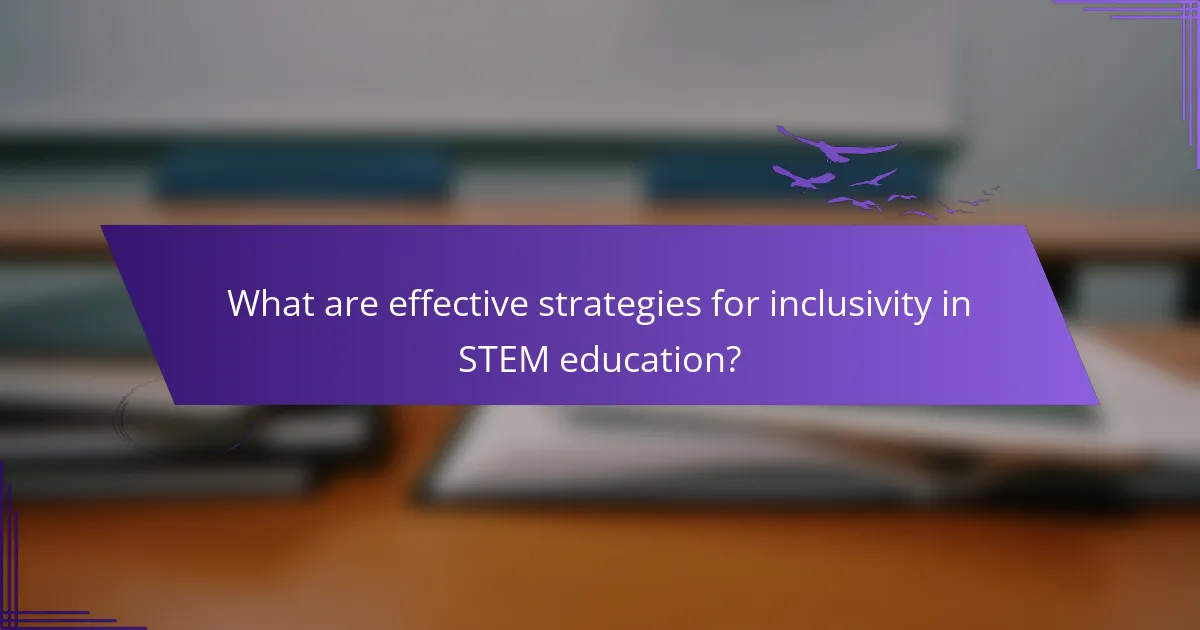
What are effective strategies for inclusivity in STEM education?
Effective strategies for inclusivity in STEM education focus on creating an environment where all students feel represented and engaged. This involves integrating diverse perspectives, fostering community connections, and employing teaching methods that accommodate various learning styles.
Diverse curriculum development
Diverse curriculum development ensures that STEM content reflects a wide range of cultures, histories, and contributions. This can involve incorporating examples from various ethnic backgrounds, highlighting innovations by women and underrepresented groups, and using culturally relevant contexts in problem-solving scenarios.
To implement this, educators can collaborate with community members and experts to curate resources that resonate with students’ experiences. Regularly updating the curriculum to include contemporary issues and advancements from diverse voices is also crucial.
Community partnerships
Building community partnerships enhances inclusivity by connecting schools with local organizations, businesses, and cultural institutions. These partnerships can provide students with real-world experiences and role models who reflect their backgrounds, making STEM more relatable and engaging.
Schools can establish mentorship programs, internship opportunities, and workshops that involve community members. This collaboration not only enriches the educational experience but also fosters a sense of belonging and support among students.
Inclusive teaching practices
Inclusive teaching practices involve adapting instructional methods to meet the diverse needs of all students. This can include using varied teaching strategies, such as hands-on activities, collaborative projects, and technology integration, to cater to different learning styles.
Educators should also create a classroom environment that encourages participation and values every student’s input. Regularly soliciting feedback and being open to adjusting teaching methods based on student needs can significantly enhance engagement and learning outcomes.
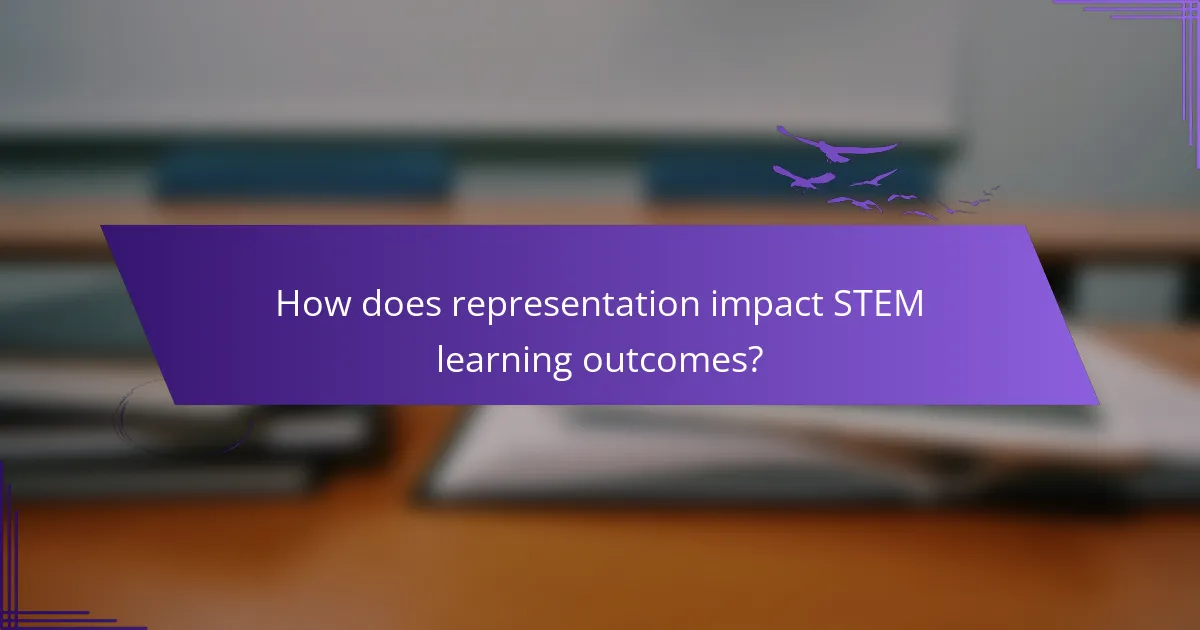
How does representation impact STEM learning outcomes?
Representation significantly influences STEM learning outcomes by enhancing student engagement and motivation. When learners see individuals from diverse backgrounds succeeding in STEM, they are more likely to envision themselves in those roles, leading to improved academic performance and persistence in these fields.
Role models in STEM fields
Role models play a crucial role in shaping students’ perceptions of what is possible in STEM. When students encounter professionals who share similar backgrounds or experiences, they gain relatable examples of success. This connection can inspire students to pursue their interests in science, technology, engineering, and mathematics.
For instance, mentorship programs that connect students with diverse STEM professionals can enhance confidence and provide guidance. Schools and organizations should actively seek to highlight diverse role models in their curricula and events to foster a sense of belonging among all students.
Curricular relevance to diverse backgrounds
Integrating culturally relevant content into STEM curricula enhances engagement and comprehension for students from various backgrounds. When lessons reflect the cultural contexts and experiences of all learners, students are more likely to find the material meaningful and applicable to their lives.
Educators can achieve this by incorporating examples, case studies, and projects that resonate with the diverse histories and contributions of different cultures in STEM. For example, discussing the contributions of scientists from various ethnic backgrounds can help students relate to the subject matter and see the value of diverse perspectives in problem-solving.
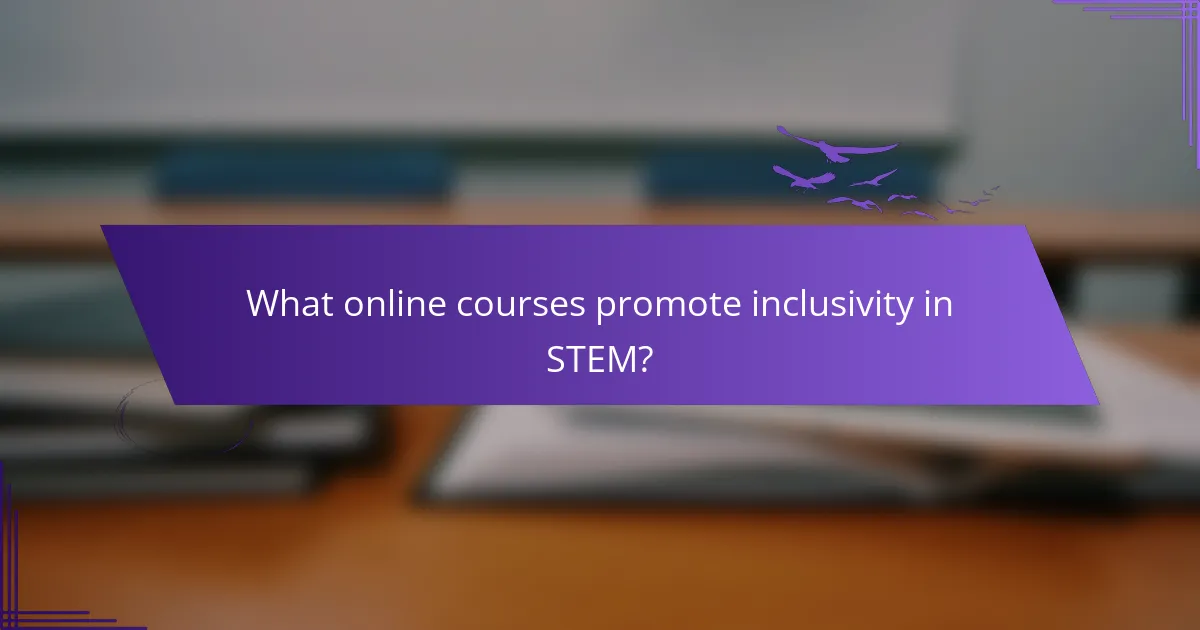
What online courses promote inclusivity in STEM?
Online courses that promote inclusivity in STEM focus on diverse perspectives, equitable teaching practices, and engagement strategies that cater to underrepresented groups. These courses aim to create a more inclusive environment in science, technology, engineering, and mathematics fields by addressing barriers and fostering representation.
Coursera’s Diversity in STEM
Coursera offers courses that emphasize the importance of diversity in STEM fields, highlighting how varied backgrounds contribute to innovation and problem-solving. These courses often include case studies and real-world examples that illustrate the impact of inclusive practices on team dynamics and project outcomes.
Participants can expect to learn about strategies for fostering an inclusive culture, such as mentorship programs and community outreach initiatives. Engaging with these materials can help educators and professionals implement effective diversity strategies in their own organizations.
edX’s Inclusive STEM Teaching
edX provides a course specifically focused on inclusive teaching practices in STEM education. This course equips educators with tools to create welcoming learning environments that support all students, particularly those from marginalized communities. Key topics include culturally responsive teaching and the use of inclusive language.
By participating in this course, educators can gain insights into designing curricula that reflect diverse perspectives and encourage student engagement. Practical assignments often involve developing lesson plans that incorporate inclusive strategies, making the learning experience directly applicable to real classroom settings.
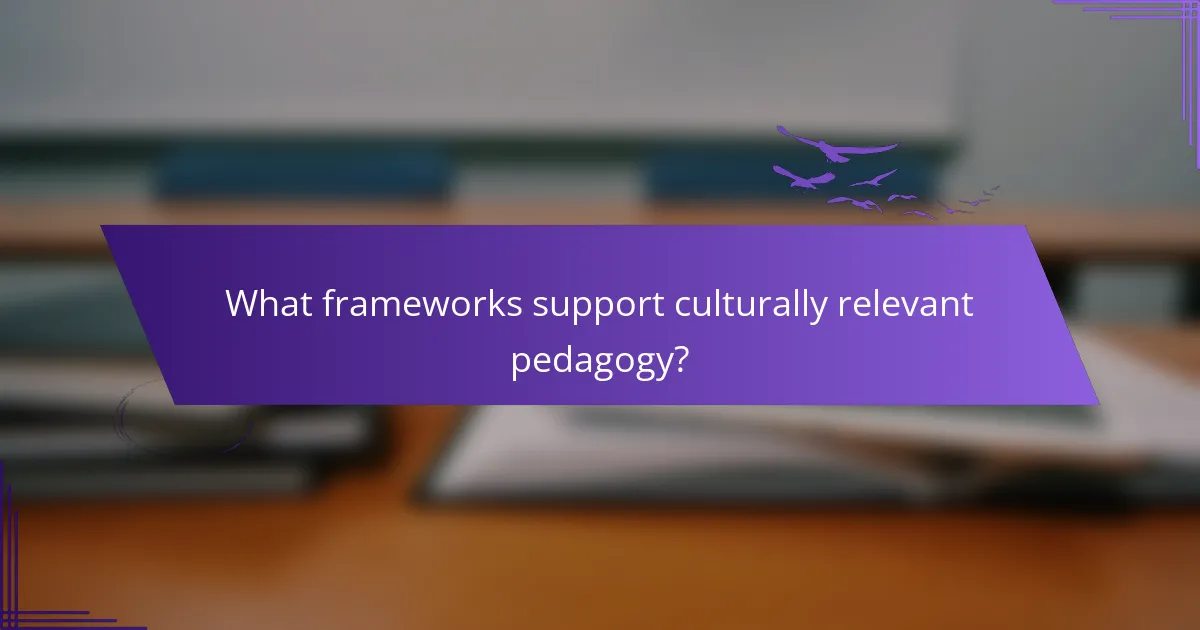
What frameworks support culturally relevant pedagogy?
Culturally relevant pedagogy is supported by various frameworks that emphasize inclusivity and representation in education. These frameworks guide educators in creating learning environments that respect and incorporate students’ cultural backgrounds, enhancing engagement and understanding.
Culturally Responsive Teaching Framework
The Culturally Responsive Teaching (CRT) framework focuses on recognizing and valuing students’ cultural identities in the classroom. It encourages educators to adapt their teaching methods to reflect the diverse backgrounds of their students, fostering a sense of belonging and respect.
Key components of CRT include building relationships with students, integrating culturally relevant materials, and promoting critical thinking about social issues. For instance, using literature from various cultures can help students connect with the content and see themselves in the curriculum.
To implement CRT effectively, educators should avoid stereotypes, actively seek out diverse perspectives, and create a classroom environment that celebrates differences. This approach not only enhances student engagement but also prepares them for a multicultural society.
Universal Design for Learning
Universal Design for Learning (UDL) is a framework that aims to optimize teaching by providing multiple means of engagement, representation, and action. UDL principles ensure that all students, regardless of their backgrounds or abilities, have equal opportunities to learn and succeed.
In practice, UDL involves offering various ways for students to access information, express their understanding, and stay motivated. For example, using multimedia resources, such as videos and interactive activities, can cater to different learning styles and preferences.
When applying UDL, educators should regularly assess student needs and preferences, allowing for flexibility in assignments and assessments. This approach not only supports diverse learners but also encourages a more inclusive classroom atmosphere.
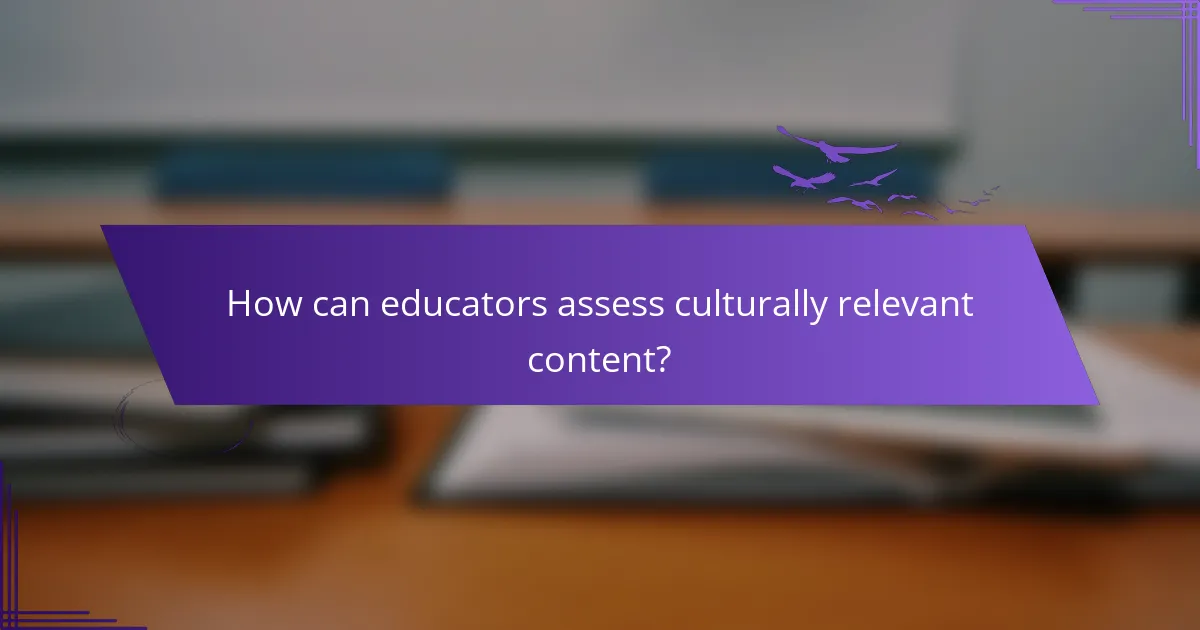
How can educators assess culturally relevant content?
Educators can assess culturally relevant content by gathering input from diverse student groups and evaluating learning outcomes. This involves actively seeking feedback and measuring how well the content resonates with students from various backgrounds.
Feedback from diverse student groups
Collecting feedback from students of different cultures is essential for assessing the relevance of educational content. Surveys, focus groups, and informal discussions can provide insights into how students perceive the material and whether it reflects their experiences and identities.
When gathering feedback, consider using open-ended questions that encourage students to express their thoughts freely. This approach can reveal specific aspects of the content that are engaging or alienating, allowing educators to make necessary adjustments.
Evaluation of learning outcomes
Evaluating learning outcomes helps determine if culturally relevant content effectively enhances student engagement and understanding. This can be done through assessments that measure knowledge retention, critical thinking, and application of concepts in real-world contexts.
To assess learning outcomes, compare performance data before and after implementing culturally relevant materials. Look for improvements in student participation, grades, and overall satisfaction with the learning experience. Regularly reviewing these outcomes ensures that the content remains effective and inclusive.
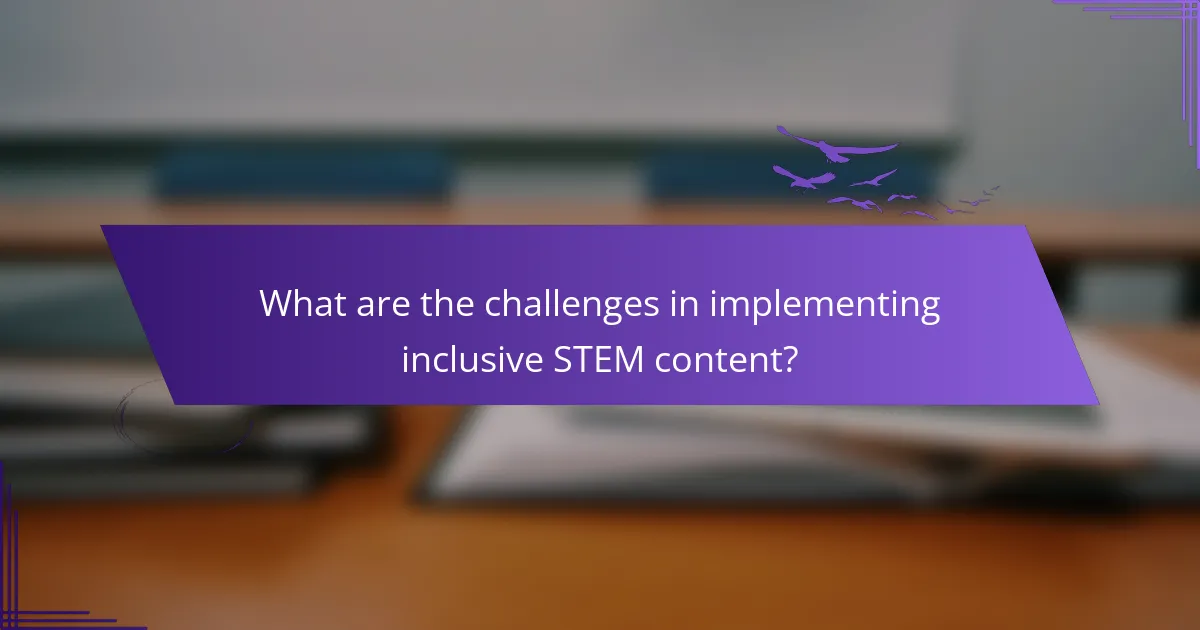
What are the challenges in implementing inclusive STEM content?
Implementing inclusive STEM content faces several challenges, including resource limitations, lack of training, and insufficient representation in materials. These obstacles can hinder the effectiveness of educational programs aimed at diverse student populations.
Resource limitations
Resource limitations significantly impact the ability to create and distribute inclusive STEM content. Schools and organizations often struggle with budget constraints, which can restrict access to diverse materials and technologies that reflect various cultures and perspectives.
For instance, educational institutions may lack funding to purchase updated textbooks or digital resources that include diverse contributions to science and technology. This can lead to a curriculum that does not adequately represent the achievements of underrepresented groups.
To address resource limitations, educators can seek partnerships with local businesses or community organizations that may provide funding or materials. Additionally, leveraging free online resources can help supplement existing curricula without incurring high costs.
